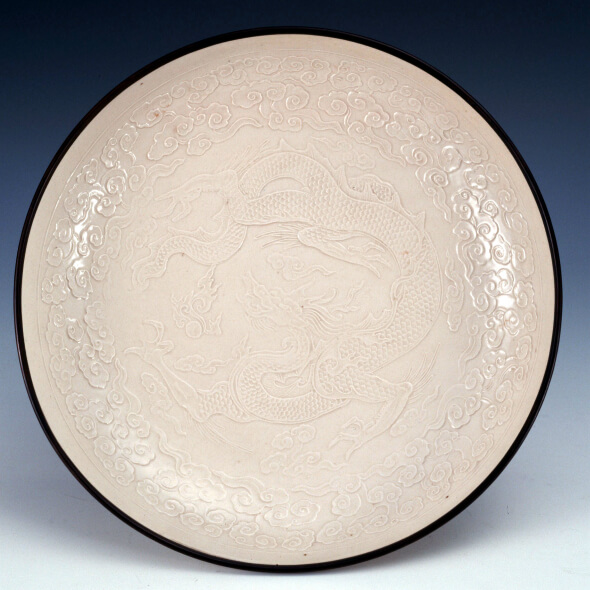Every day for 30 days we will be featuring a museum object that has inspired or intrigued us, in the hope that “an object a day keeps the doctor away.” We love creating exciting, meaningful storytelling through engaging experiences, but still firmly believe that it is hard to beat the thrill of being in the presence of authentic artefacts. Today’s object is: a porcelain dragon dish.

Sometimes you come across an object in a museum and you have to read the date twice. And then again. That’s how I felt when I saw this dish in the Shanghai Museum.
Think about the things that were being produced in Europe at a similar time. When you look at examples of early medieval English pottery such as Stamford ware it is clear that the skill of forming a jug had only just been mastered. By comparison it is crude.
This white porcelain dragon dish is a great example of Ding ware made in the 11-12th centuries in China. Usually white in colour, Ding ware was either plain or decorated with incised, molded, impressed, or carved designs. Phoenixes, lillies, and peonies were popular. The most important types of Ding ware were bai Ding (“white” Ding), fen Ding (“flour” Ding), and tu Ding (“earthen” Ding). Fired upside down, many pieces of Ding ware, especially bowls, have an unglazed rim banded with metal.
Ding ware was particularly popular during the Song dynasty (AD 960–1279) at Dingzhou (in present Quyang Xian, Hebei province) and, after the court’s transfer to the south in 1127, near Jingdezhen, a place still renowned for its tea ware.
The Shanghai Museum is open Tuesday to Sunday 9am to 5pm.
